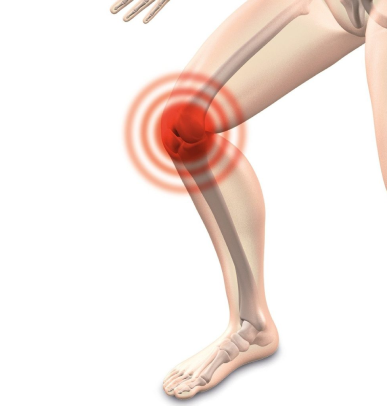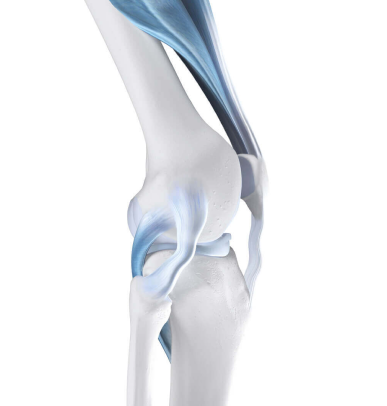Patellofemoral Instability

What is Patellofemoral Instability?
Patellar Instability refers to a condition where the kneecap (patella) fails to remain securely positioned within its groove at the end of the thighbone (femur).
This instability occurs when the patella does not track properly in the trochlear groove during knee movement, leading to misalignment and potential dislocation.
At Tarabichi Joint Care, we understand the complexities of patellofemoral instability and are dedicated to providing the best care for our patients in Dubai. Our team of experienced knee doctors is here to guide you through the available diagnosis and treatment options.
Anatomy
It is a small, flat bone at the front of the knee joint, offering protection to the knee and vitally involved in movement of the leg.
The patella rests in a groove on the femur (thigh bone), where it is stabilized by a set of ligaments and muscles. When these are weak or injured, then the patella may become unstable and either dislocates or subluxates.
Common Causes of Unstable Kneecap
- Anatomical Abnormalities
- Improper muscle balance
- Abnormal Q angle
- Patellofemoral Arthritis
- Shallow or uneven trochlear groove
- Loose ligaments or hypermobility
- Direct impact on the kneecap
Types of Patellofemoral Instability
Patellofemoral instability can be categorized into two main types:

Acute Instability
This kind of instability may often result from an injury or trauma with a sudden dislocation.

Chronic Instability
This develops over time, often due to repeated subluxations or long-standing weakness.
When is Treatment Recommended?
- The patient experiences recurrent dislocations or subluxations.
- The pain and swelling persist after conservative management.
Candidates Eligible for Treatment
- Active individuals, especially athletes, experience knee instability.
- Patients with a history of knee injuries leading to recurrent dislocation.
- Patients suffering from chronic pain due to knee instability.
Diagnosis
Here at Tarabichi Joint Care, we work on an overall approach to diagnosing Patellofemoral instability. For us, it includes the following considerations:
Diagnosing patellofemoral instability usually involves thorough physical examination and imaging tests like X-rays or MRI. At Tarabichi Joint Care, our experts utilize the latest technology to assess your knee’s condition accurately and develop a personalized treatment plan.
Treatment Options
Non-Surgical Treatments
In many cases, non-surgical treatments can effectively manage patellofemoral instability. These may include:
Physical Therapy: A physiotherapy program can be designed specifically for the strengthening of the surrounding muscles of the knee joint, thus enhancing its stability and function. Our Dubai physiotherapy and rehabilitation center offers specialized programs to aid in recovery.
Bracing: The knee brace could also stabilize the kneecap and prevent it from dislocating during activity.
Activity Modification: Reduce activities to prevent high-impact movement and decrease discomfort and instability.
Surgical Treatments
If the above methods are ineffective, then surgical options become necessary. At Tarabichi Joint Care, we offer advanced knee surgery in Dubai, including:
Medial Patellofemoral Ligament (MPFL) Repair: This procedure focuses on reinforcing and repairing the ligaments that secure the kneecap, helping to stabilize it in its proper position.
MPFL Reconstruction: When the tear is too extensive, MPFL Reconstruction Surgery will replace the damaged ligament with a hamstring tendon sourced either from the body or through a donor. This will stabilise the kneecap.
Knee Osteotomy (Tibial Tubercle Transfer): This more extensive open surgery involves realigning the shinbone, thighbone, kneecap, and associated connective tissues. Because a larger incision is required, it usually means a longer recovery than minimally invasive methods such as knee arthroscopy in Dubai.
Knee Replacement in Dubai: For patients who have severe arthritis or frequent dislocations, a knee replacement may be necessary. This procedure involves the replacement of the joint of the damaged knee by an artificial implant to eliminate the pain and improve mobility.
Patellar re-alignment surgery
- Proximal Re-alignment Procedures: This procedure is carried out by lengthening structures on the outer side of the patella or shortening the ligaments on the inner side to stabilize the kneecap.
- Distal Re-alignment Procedures: This would move the tibial tubercle medially to decrease the Q angle, which promotes proper knee alignment and stability.
Why Choose Tarabichi Joint Care Knee Joint Treatment in Dubai?
At Tarabichi Joint Care, we pride ourselves on providing exceptional patient care. Our commitment to innovation and excellence in knee pain treatment in Dubai sets us apart. Here’s what you can expect when you choose us:
- Our doctors are updated with the latest treatments concerning osteoarthritis in the knees.
- Every patient is unique; our treatment plans reflect your needs and goals.
- We utilize advanced technology to ensure accurate diagnoses and effective treatments.
Patellofemoral instability can significantly impact daily life and physical activities. At Tarabichi Joint Care, we are committed to providing comprehensive care tailored to your needs.
Whether through conservative management or advanced surgical options, our goal is to restore stability and function to your knee. If you are experiencing symptoms of an unstable kneecap, contact us today to schedule a consultation with our team of experts in Dubai.
FAQ’S
Anatomical factors, injuries, overuse, and muscle weakness can cause patellofemoral instability.
Surgery may be necessary if non-surgical treatments fail to relieve symptoms and instability persists.
Recovery includes a rehabilitation program focused on regaining strength and stability in the knee.
For more information or to schedule a consultation with a knee doctor Dubai, contact Tarabichi Joint Care today. Your journey to recovery starts here!
Treatment typically starts with a consultation by a knee doctor in Dubai. Assessment is detailed and all possible treatment options shall be outlined.
This can be as simple as bracing and physiotherapy, but the surgical option will likely need Knee Osteotomy. Small incisions are then performed when surgery is required and then the operation itself will be directed by the camera.
While most patients recover well from treatment for patellofemoral instability, potential complications may include:
- Infection at the surgical site.
- Blood clots.
- Persistent pain or instability.
- Difficulty in regaining full range of motion.
Before undergoing treatment, patients should prepare the following documents:
- Medical history, including any previous knee injuries.
- Current medications list.
- Insurance information.
- All the imaging studies, including X-rays or MRIs, were performed before.
